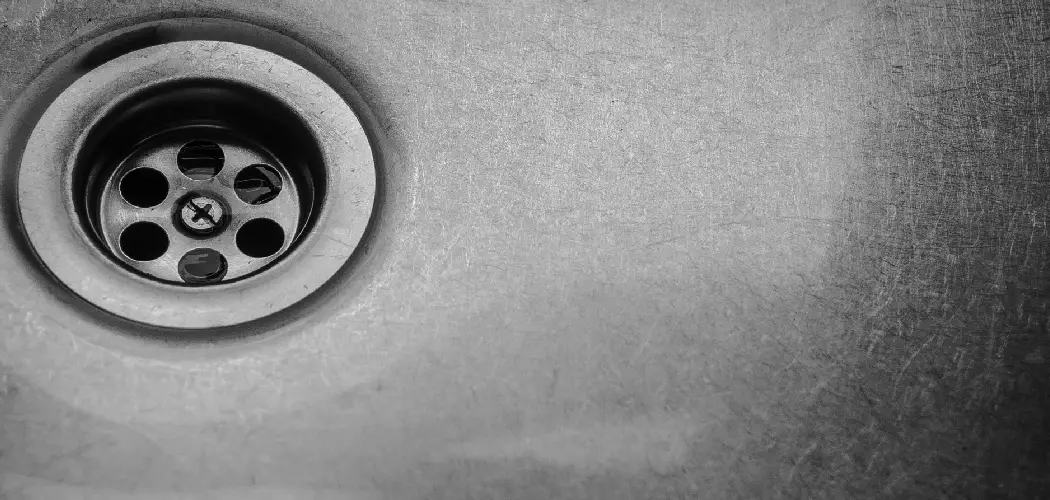Rust on a sink drain can be unsightly and indicative of underlying issues that might require attention. This article aims to provide effective methods on how to remove rust from sink drain, ensuring it looks clean and preventing further corrosion.
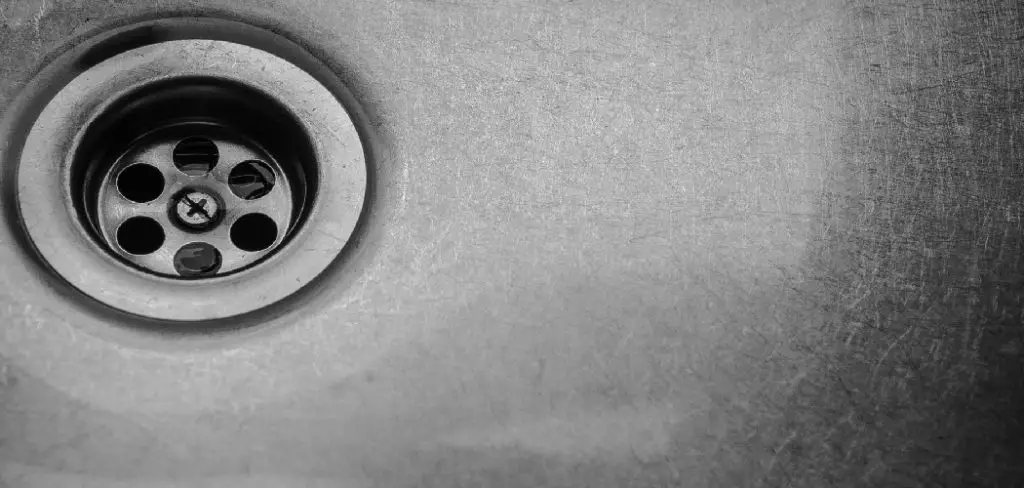
Rust primarily forms due to a combination of factors, including hard water, which contains high mineral content, and moisture buildup that promotes oxidation of metal components. Additionally, prolonged exposure to water can accelerate the reactive process, leading to the formation of rust. We will explore various rust removal techniques to address this issue, ranging from natural remedies utilizing household ingredients to more robust commercial cleaners.
Furthermore, we will discuss preventive measures to help maintain a rust-free environment in your sink drain, thereby extending its lifespan and functionality. With these methods, you can restore the appearance of your sink drain and protect it from future damage.
Gathering Necessary Materials
Basic Cleaning Supplies
Gather essential cleaning supplies before starting the rust removal process to ensure effectiveness and safety. You will need rubber gloves to protect your hands from harsh chemicals, scrub brushes or old toothbrushes to scrub the rust, and soft cloths to dry the area afterward.
Additionally, a bucket may be useful for rinsing and collecting debris. These materials will help streamline the cleaning process and ensure you can work efficiently.
Natural Rust Removal Ingredients
For natural rust removal, you can use common household items that are both effective and gentle on surfaces. Gather baking soda, which acts as a mild abrasive, lemon juice for its acidity, white vinegar to help dissolve rust, and salt to create a powerful cleaning paste.
These ingredients contribute to rust removal and are readily available in your kitchen, making them convenient and cost-effective options for tackling rust on your sink drain.
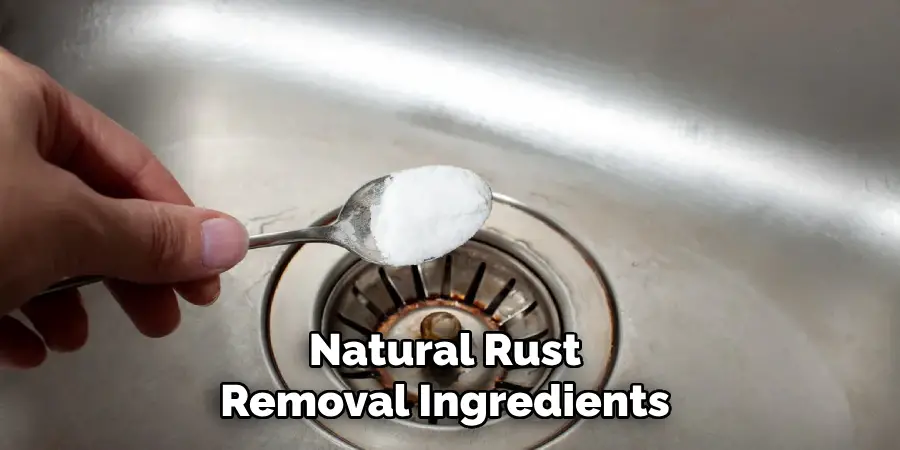
How to Remove Rust from Sink Drain: Using Baking Soda and Vinegar
Step 1: Create a Baking Soda Paste
To start, mix baking soda with a small amount of water to create a thick paste. This paste will serve as an abrasive cleaner that helps lift rust from the surface of the sink drain. Once the paste is well-combined, spread it generously over the rusted area, ensuring it fully covers the rusty patches.
Step 2: Add Vinegar
Next, pour white vinegar over the baking soda paste. This will initiate a chemical reaction, causing the mixture to fizz as it breaks down the rust. The fizzing action helps to penetrate the rust and loosen it from the metal surface.
Allow the mixture to sit on the rust for about 15-30 minutes; this waiting period is crucial for maximizing the effectiveness of the cleaning solution.
Step 3: Scrub and Rinse
After waiting, grab a scrub brush or an old toothbrush and gently scrub away the rust. Combining the baking soda paste and vinegar should have softened the rust, making removing it easier. Once you’ve scrubbed the area thoroughly, rinse it with warm water to wash away any remaining rust and cleaning solution.
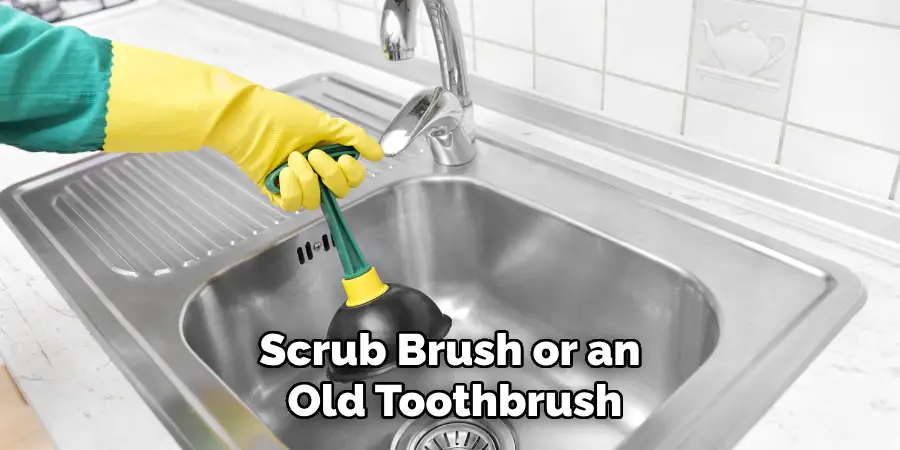
Finally, dry the area carefully with a soft cloth to prevent further moisture accumulation, ensuring a clean and rust-free sink drain.
Using Lemon Juice and Salt
Step 1: Prepare the Mixture
To begin, create a powerful rust-fighting solution using lemon juice and salt. Start by generously sprinkling salt directly over the rusted area on your sink drain. The salt acts as an abrasive agent that promotes the removal of rust. Next, cut a fresh lemon in half and squeeze the juice onto the salt-covered rust. The natural acidity of the lemon juice is crucial; it works to break down the rust and will help lift it away from the metal surface.

Step 2: Let It Sit
Once the lemon juice has been applied, allow the mixture to work its magic by letting it sit on the rust for a duration of 30 minutes to an hour. This wait time is essential, as it gives the acidic properties of the lemon juice time to effectively dissolve the rust. If the rust is particularly severe, you might consider extending the sitting time to enhance the treatment’s effectiveness. During this period, it is advisable to keep the area moist by reapplying the lemon juice if it begins to dry out.
Step 3: Scrub and Rinse
After the designated waiting period, it’s time to scrub away the rust. Using a scrub brush or an old toothbrush, gently scrub the treated area in circular motions. The combination of the salt and lemon juice should have softened the rust considerably, making removing it easier. Once you have scrubbed the area thoroughly, rinse it with warm water to wash away the remnants of the mixture and any loosened rust. Finally, dry the area carefully with a soft cloth to eliminate moisture and prevent any future rust formation. This method cleans the drain and leaves a refreshing citrus scent.
Using Commercial Rust Removers
Step 1: Choose the Right Product
When opting for commercial rust removers, selecting a product specifically designed for tackling rust on metal and plumbing fixtures is essential. Brands such as CLR or similar alternatives are effective choices, offering formulations that can penetrate tough rust stains. Before application, carefully read the manufacturer’s instructions, providing important information for safe and effective use. This includes safety precautions, the right application method, and any specific surfaces or materials that the product is not suitable for, helping to ensure you achieve the best results without damaging your sink drain.
Step 2: Apply the Rust Remover
Once a suitable rust remover is chosen, apply the product directly to the rusted area, ensuring that it thoroughly covers the affected spots. Following the manufacturer’s recommendations regarding the amount to use is crucial, as applying too little may not yield effective results. After application, allow the rust remover to sit for the suggested time on the label—this waiting period is vital for the chemical reactions to take effect and adequately loosen the rust.
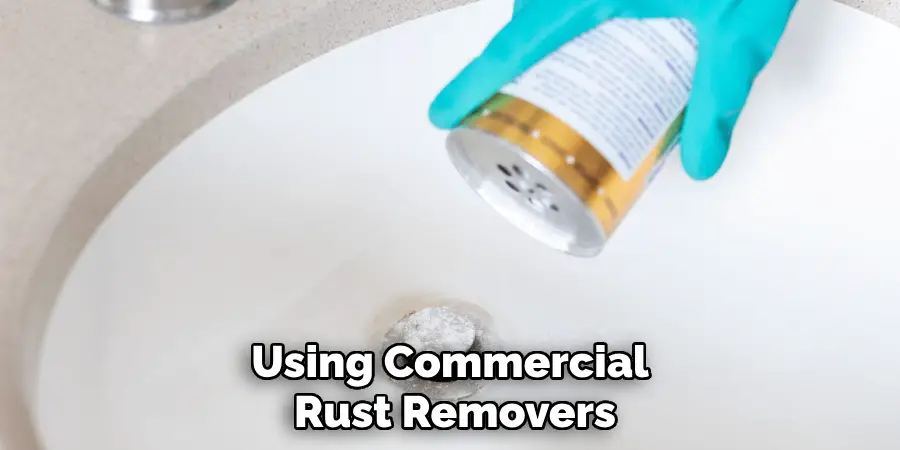
Step 3: Scrub and Rinse
After the recommended wait time has elapsed, use a brush to scrub the rusted area, applying additional pressure if needed for particularly stubborn spots. The rust remover should have softened the rust, making the scrubbing process more manageable. Once the rust is dislodged, rinse the area thoroughly with water to wash away any remaining product and loosened rust particles. Finally, dry the area with a soft cloth to eliminate moisture, which helps prevent any future rust formation and keeps your sink drain in optimal condition.
Preventing Rust from Returning
Keep the Drain Dry
Maintaining a rust-free sink drain is essential to keep the area dry. One effective method is to wipe down the sink and drain after each use, ensuring no water is left to sit and create rust. This simple habit can greatly reduce the moisture that leads to rust formation. Additionally, using a drain cover can be beneficial, as it prevents debris from accumulating and trapping moisture within the drain, further protecting against rust development.
Apply a Protective Coating
In addition to keeping the drain dry, applying a protective coating can be a proactive measure against rust. Consider using products like car wax or a silicone-based spray on the drain’s surface. These protective coatings form a barrier that helps repel moisture and prevent rust from forming. Regularly reapplying this protective layer, especially after cleaning, can significantly extend the life of your sink drain and maintain its appearance.
When to Replace the Drain
Severe Rust Damage
Assess the damage carefully; if the rust is extensive or has caused structural weakening of the drain, replacing it altogether may be necessary. Significant rust can compromise the drain’s integrity, posing a risk of leaks or further damage. In such cases, it’s advisable to consult a professional plumber to evaluate the situation and recommend the best course of action, especially if the drain appears particularly challenging to remove.
Signs of Replacement
Look out for indicators such as leaks, cracks, or persistent rust buildup—these are clear signs that a simple cleaning may not suffice. If you notice any of these issues, it’s prudent to consider replacing the drain instead of repeatedly attempting to clean it, as ongoing rust problems can lead to further complications and costly repairs down the line.
Conclusion
In summary, effectively learning how to remove rust from sink drain involves a variety of methods. Natural solutions such as baking soda combined with vinegar or lemon juice offer eco-friendly alternatives for tackling small rust spots. For tougher rust, commercial rust removers can provide more potent results.
Regardless of the approach taken, it’s crucial to act quickly when rust first appears to prevent it from spreading and inflicting further damage. Regular maintenance, including keeping the drain dry and applying protective coatings, plays an essential role in preserving the integrity of your sink drain.
By implementing these strategies, you can ensure your sink remains rust-free and in optimal condition over time, saving you from costly repairs down the line.

